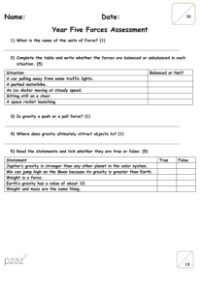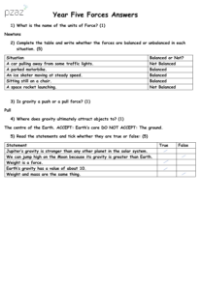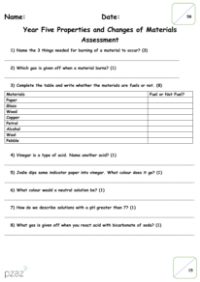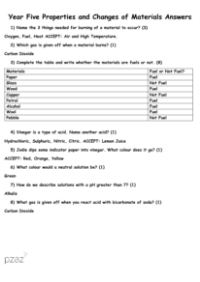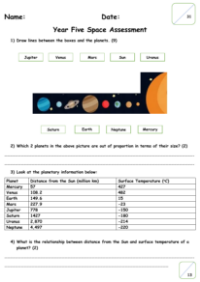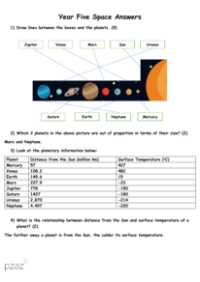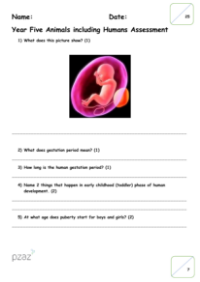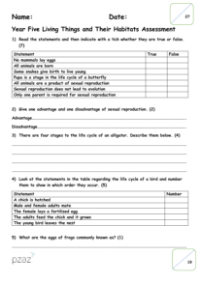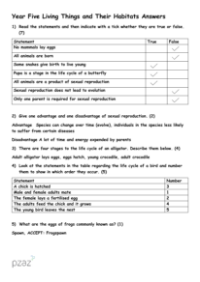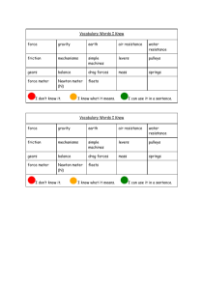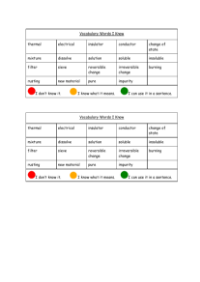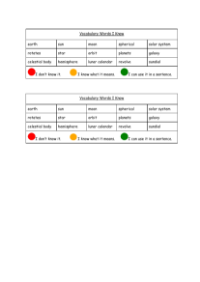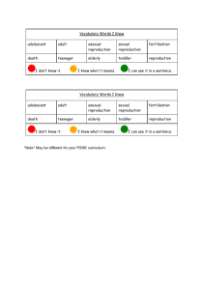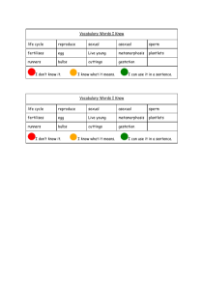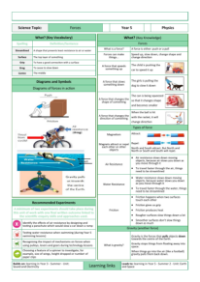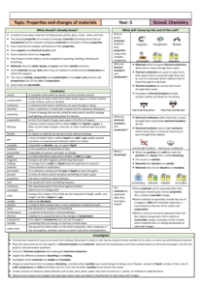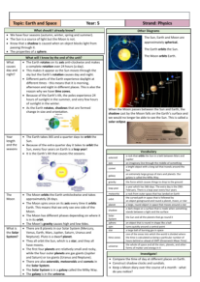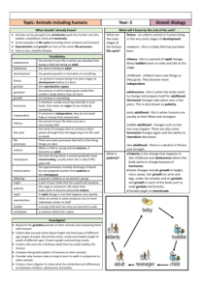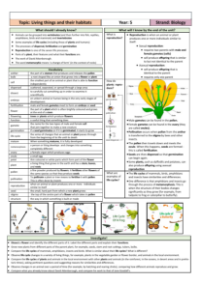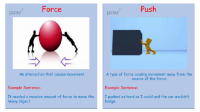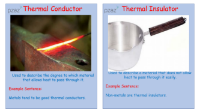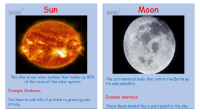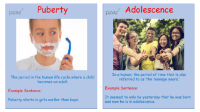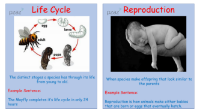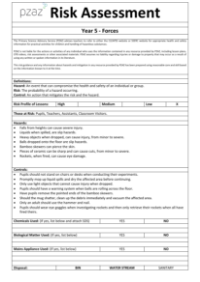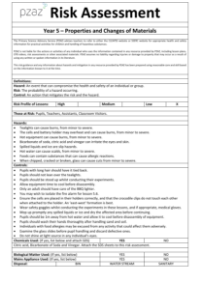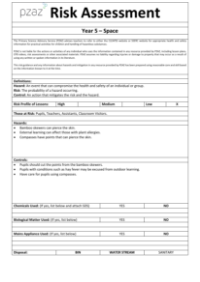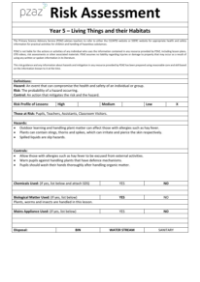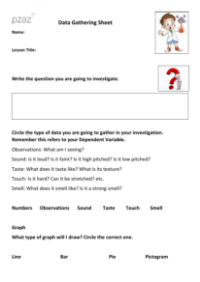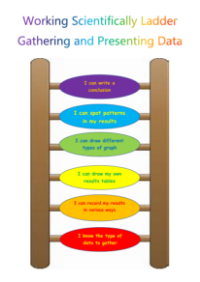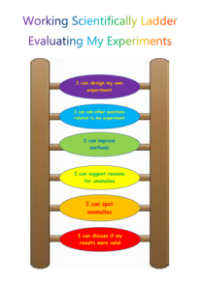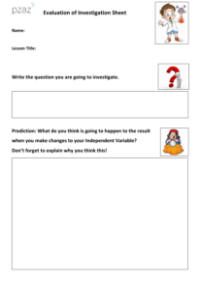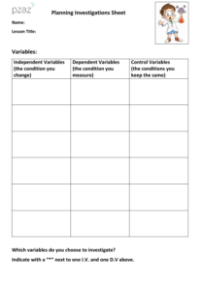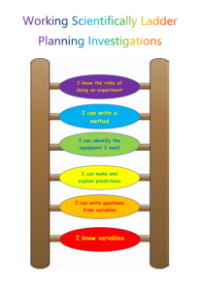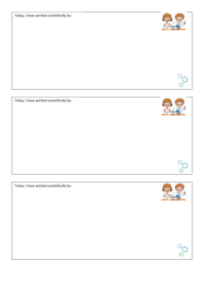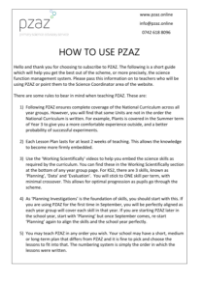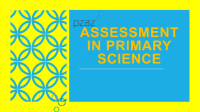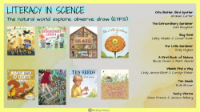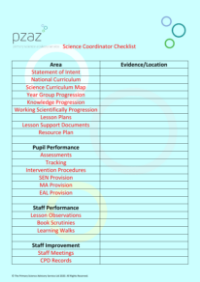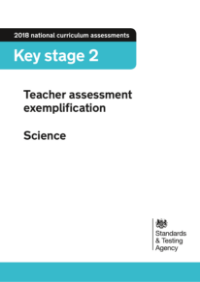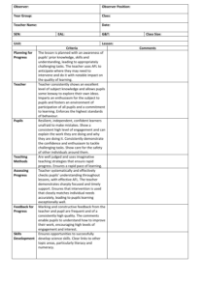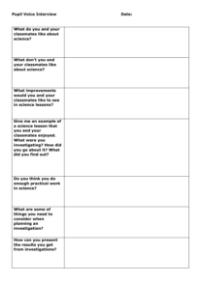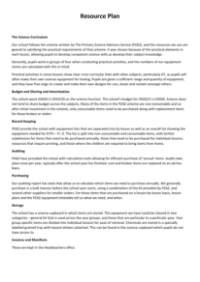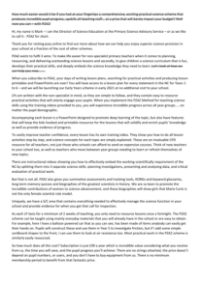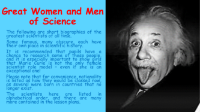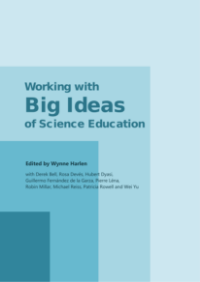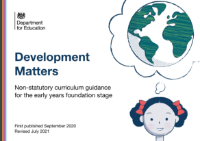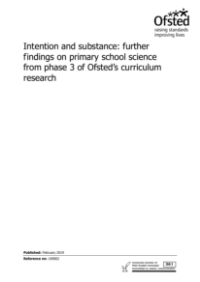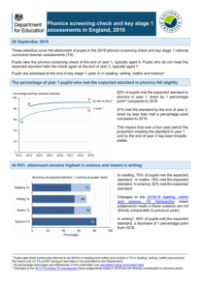Science - Year 5 - Pzaz
What does the Year 5 scheme cover?
PZAZ provides Year 5 teachers with all of the essential tools to deliver outstanding Science lessons, ensuring they have all of the resources necessary to plan and achieve positive outcomes for their pupils. With each lesson designed to take place over two weeks, scientific knowledge builds gradually over time to become firmly embedded. This approach not only fosters a deep appreciation for exploring the world around them but also gives pupils a lasting enthusiasm for Science learning that stays with them throughout Key Stage 2 and beyond.
Forces
What causes gravity, friction and air resistance? Find out in this unit. Answer questions such as ‘When mass increases, does gravity decrease?’ and ‘What is the correlation between the amount of friction and the rate of deceleration?’ Investigate the impact of water resistance on objects moving through water and learn how boats are strategically designed to be streamlined or hydrodynamic to enhance their efficiency in water travel.
Properties and Changes of Materials
Explore thermal and electrical conductivity in this unit, the fire triangle and the chemical reaction leading to combustion. Classify substances as acids or alkalis and explore their pH levels as well as how to neutralise acids. Analyse a solution and decide how best to separate the component parts through sieving and filtration, and explore evaporation to separate solutes from solvents.
Earth and Space
In this unit, classify planets as either rocky or gas giants and learn about the birth of the solar system. Investigate the elliptical paths planets follow as they orbit the sun, examining how the surface temperature varies with their distance from the Sun. Look into the cyclical nature of night and day including the phases of the Moon, and explore why the Sun, Moon and Earth are only roughly spherical.
Animals, including Humans
Examine the human life cycle in this unit, delving into the transformative phase of puberty and understanding the shifts in our bone structure and eyesight as we age. Investigate the exclusive reliance of animals on sexual reproduction for offspring production, distinguishing between species that lay eggs and those that give birth to live offspring.
Living Things and Their Habitats
Explore the intricate process of reproduction in plants during this unit. Uncover techniques for inducing asexual reproduction in plants and examine the role of root powder in fostering the growth of roots.
What’s included for Year 5 teachers?
- Full Year 5 National Curriculum coverage
- Detailed lesson plans and presentations
- Visual knowledge organisers for each lesson
- Easy-to-follow teacher explanation videos
- Links to prior and future learning
- Questions, common misconceptions, cross-curricular links & more!
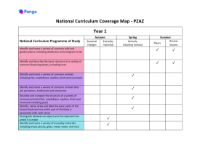
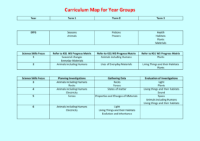


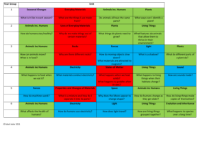
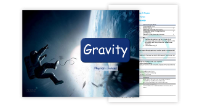
The lesson aims to explain how unsupported objects fall towards the Earth due to the force of gravity. The students will be asked questions such as:
- Can I describe gravity as a pull, or attractive force?
- Can I explain that gravity pulls objects towards the centre of the Earth, and if they are in the air, it would make objects fall?
- Can I calculate weight?
The lesson also includes cross-curricular links to history, ICT, and math. In history, students will have the opportunity to find out why the leaning tower of Pisa was important in the study of gravity. In ICT, students will research the gravitational constants of various celestial bodies, and in math, students will perform unit conversions and calculations, and produce graphs of their experimental results.
Misconceptions that will be addressed in this lesson:
- Heavier objects fall more quickly
- Objects are attracted to the ground
- There is no gravity in space
- Gravity is the same everywhere in the universe
Keywords:
- Gravity
- Descend
- Newton
- Air-Resistance
- Mass
- Weight
Influential scientists that will be mentioned in the lesson include:
- Aristotle
- Galileo Galilei
- Isaac Newton
- Albert Einstein
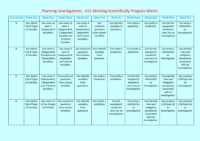
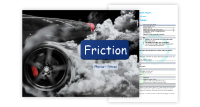
In this lesson, students will learn about the effects of friction on moving surfaces. The objective of this lesson is for students to be able to identify that friction occurs when two surfaces slide against each other, understand that friction slows objects down, and describe the relationship between the amount of friction and the rate of deceleration. This lesson aligns with the Year 3 science curriculum on Forces and Magnets and has cross-curricular links to Design and Technology and Mathematics.
Students will be introduced to the science behind friction through a teacher demonstration of the "Handkerchief and the Cup" activity. They will then participate in the "Does Mass Affect Friction?" activity where they will test the amount of friction on different surfaces with varying amounts of mass. The results of this experiment can be graphed for mathematical analysis.
Misconceptions and Corrections
It is important to note that students may have misconceptions about friction. Some students may think that lubricants eliminate friction, when in reality, they only reduce friction. Additionally, students may believe that friction is not useful when in fact, it is essential in slowing down machines. Finally, students may believe that smooth surfaces have no friction when all materials show friction to a certain extent.
Keywords
- Friction
- Decelerate
- Smooth
- Rough
- Surface
Influential Scientists
This lesson highlights the work of several influential scientists in the field of friction including Leonardo da Vinci, Guillaume Amontons, Charles Augustin de Coulomb, Charles Hatcbett, Theodor Reye, and David Tabor.
Important Lesson Guidance
It is important to note that before the lesson, you will need to collect 32 plastic bottle caps and punch holes in the center of each cap. The "Does Mass Affect Friction?" activity requires materials such as Tupperware tubs, masses, string, force meters, a 100ml measuring cylinder, and aluminium foil. The experiment is performed in groups of four and the results can be recorded in a table for analysis. It is important to keep the balloon cars for Lesson 5.3.
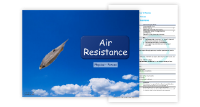
In this lesson, students will learn about the effects of air resistance. The objectives are to explain air resistance as a type of friction, describe the effects of air resistance, and suggest ways of increasing or decreasing air resistance. This lesson aligns with the Year 5 curriculum of identifying the effects of air resistance, water resistance, and friction in forces.
Previous Learning
Students in the Early Years Foundation Stage (EYFS) and Key Stage 1 (KS1) are not required to learn about forces, although they may have learned that parachutes slow down the speed of falling. In Key Stage 2 (KS2), Year 3 students learn about forces and magnets and how things move on different surfaces, and Year 5 students learn about forces in more detail.
Cross-Curricular Links
- Design and Technology: Students will make helicopters and rockets.
- Art: Students can color and decorate their rockets.
- Mathematics: Students can create graphs of their experimental results.
- History: Students can write a report on the use of paratroopers in World War 2.
Misconceptions and Corrections
- Misconception: Air resistance is not friction. Correction: Air resistance is a type of friction where the particles of an object strike air particles as it moves through air.
- Misconception: There is air resistance in space. Correction: No air particles exist in space, so there is no air resistance.
- Misconception: Fins on rockets reduce air resistance. Correction: By themselves, fins do not reduce air resistance, but they stabilize the rocket, and an unstable rocket will exhibit greater air resistance.
Important Lesson Guidance
Teachers should ensure that students have the necessary equipment for the lesson, including balloons from a previous lesson and hairdryers from home. The eggs used in the activity should not be cooked.
Activity: Save the Egg!
In this activity, the whole class will participate in a teacher demonstration. Students will observe the differences in descent speed between three different sized parachutes made from bin bags and string, with an egg in a resealable bag as the payload. The larger the surface area of the parachute, the slower the descent and the greater the air resistance.
Science Explained
Air resistance is a frictional force that slows objects as they move through the air. It acts in the opposite direction to the opposing force, in this case, gravity. The surface area of the object moving through the air affects the amount of air resistance it experiences. In the Save the Egg activity, students will see that the large parachute descends slower and helps keep the egg intact upon landing.
Possible Questions
- Why does the large parachute descend more slowly?
- What type of force is air resistance?
- Is air resistance useful
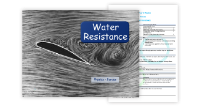
This lesson focuses on the concept of water resistance, its effects on moving objects, and ways to reduce it. Students will learn about the forces that act between moving surfaces and how they affect the movement of objects. The students will be introduced to the influential scientists who have studied water resistance and friction, and will be taught about the differences between water resistance and friction.
The lesson is divided into three activities: making and testing boats, watercraft shape research, and the quickest submarine. In the first activity, students will create different boat shapes and measure the water resistance using a force meter. In the second activity, students will research the shapes of different watercraft and compare them with ancient and modern watercraft. In the third activity, students will create submarines and compare their speeds.
Keywords
- Friction
- Water Resistance
- Surface Area
- Decelerate
- Water Particles
- Drag
- Float
- Sink
Misconceptions
- Water Resistance is not friction
- There is no water resistance for floating objects
It is important to note that water resistance is a type of friction, where the particles of an object strike water particles as it moves through air. Also, objects in contact with water still experience water resistance.
Important Lesson Guidance
In this lesson, students will be conducting experiments with water troughs, so it is important to have plenty of paper towels ready. The cleanup procedure for the water trough experiments is described in the lesson plan, but if students forget to place their troughs on the corner of the table, they will need to use a jug as a scoop instead.
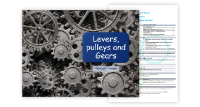
In this lesson, students will learn about the basic concepts of levers, pulleys, and gears, and how they are used to make mechanical work easier. They will learn that by using these mechanisms, a smaller force can have a greater effect. The lesson will cover four main objectives:
- State that machines can make mechanical work easier.
- Explain that the longer the lever, the less effort needed to lift a load.
- Explain that adding pulleys reduces the effort required to lift a load.
- Describe the effect of a larger cog on a smaller cog.
This lesson is suitable for students in year 3 who have already been introduced to forces and magnets. The lesson plan also has cross-curricular links with design and technology, mathematics, and history. Students will make a simple lever and graph their experimental results, and learn about the history of pulleys and their usage in ancient civilizations. The lesson plan includes activities that will help students understand the concepts of effort, load, energy, fulcrum, pivot, mechanical, pulley, gears, cog, and rotation.
Influential scientists such as Archimedes, Hero of Alexandria, Franz Reuleux, and Simon Stevin will be introduced in the lesson. The teacher will need to purchase a gear set as it is not possible to make them in class. The class will participate in a demonstration to show the effort required to lift a load can be reduced by using pulleys. The lesson will also include an activity where students will learn how the classroom door functions as a lever and how the position of the fulcrum affects the effort required to move a load.
In conclusion, this lesson is a comprehensive introduction to the basics of levers, pulleys, and gears and how they can be used to make mechanical work easier. Students will learn how simple machines work and be able to apply their understanding to real-world scenarios.
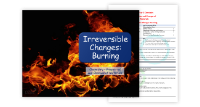
This lesson teaches pupils about the fire triangle and the importance of understanding the three elements that are needed to produce fire: heat, fuel, and oxygen. They will be introduced to the concept of combustion and how it leads to the formation of new materials. The pupils will then participate in a series of hands-on activities to reinforce their understanding of the fire triangle, including a report on the history of combustion and graphs of their experimental results.
Previous Learning
Prior to this lesson, pupils should have an understanding of the states of matter and have identified and named various everyday materials. In Year 4, they learned about the states of matter and observed how some materials change state when heated or cooled.
Keywords
- Fire
- Burning
- Combustion
- Oxygen
- Carbon dioxide
- Fuel
- Mass
Influential Scientists
- Antoine Lavoisier
- Marianne Lavoisier
- Henry Cavendish
- Joseph Priestley
- Carl Scheele
Activities
The Fire Triangle
Pupils will work in groups of two to produce a report on the three elements of the fire triangle. They will also draw the triangle as part of their report.
Fire Needs Oxygen (WS)
Pupils will work in groups of four to investigate the relationship between the size of a glass and the time a tealight can remain lit. They will record the results of their experiment in a table and observe the impact of the availability of oxygen on the combustion process.
What Happens to the Mass of the Candle When Lit? (WS)
Pupils will work in groups of four to measure the mass of a tealight before and after it has been lit. They will observe the impact of combustion on the mass of the candle and record their results in a table.
Science Explained
The lesson explains the process of combustion, including the role of fuel, heat, and oxygen. The pupils will learn that the wax in a candle is the fuel, and the matches provide the heat. The available oxygen in the air is used up during combustion, leading to the formation of carbon dioxide, which then extinguishes the flame. The lesson highlights that the process of combustion is irreversible and that the carbon dioxide produced does not return to its original form as wax.
Important Lesson Guidance
Safety is the top priority in this lesson. It is important that the teacher adheres to the guidance provided and that enough materials are available for the activities, including tealight candles and narrow-gauge iron wool.

The main focus of this lesson is to explain that some changes result in the formation of new materials, which is not usually reversible. Students will learn about chemical reactions and the signs that indicate a reaction has occurred, such as the formation of gas, heat, or light. They will also learn to identify the products of chemical reactions. The class will also classify substances as acids, alkalis, or neutral based on their pH level, which is a measure of the ability of a substance to produce hydrogen in solution. The pH scale ranges from 1-14, with values below 7 being acidic, values above 7 being alkaline, and 7 being neutral.
This lesson is aligned with the previous learning in Year 1 to identify and name everyday materials and in Year 2 to find out how solid objects' shapes can be changed. The activity will involve using pH paper and a variety of substances such as cola, lemon juice, bicarbonate of soda, vinegar, and more to classify the substances as acid, alkali, or neutral. Students will work in groups of four and follow the steps of tearing off some of the pH paper and dipping it into the sample, observing the color change, and making a judgement of the pH level.
In the second activity, students will learn about neutralizing acids. They will measure out different amounts of vinegar and bicarbonate of soda, stir the mixture, and test the pH level until the paper turns green. They will repeat the process with different ratios of vinegar and bicarbonate of soda to understand the effect of adding more or less of either substance on the pH level.
Cross-Curricular Links
- DT: Research the role of acids in etching
- Maths: Produce graphs of experimental results
- History: Write an essay on the role of acids in the first battery made
Important Lesson Guidance
Before the lesson, the teacher will need to obtain some cola, bicarbonate of soda, and lemon juice. For the pH classification activity, the teacher has free reign on the substances tested, as long as they are safe for students to handle. The solid samples will need to be mixed with a small amount of water for testing. In the neutralizing acids activity, the equipment required includes clear plastic cups, vinegar, bicarbonate of soda, pH paper, teaspoons, and a measuring cylinder. The students will work in groups of two.
Influential Scientists
Soren Sorensen, Jons Berzelius, Humphrey Davey.
Keywords
Irreversible, Acid, Alkali, pH scale, Neutral, Carbon Dioxide, Neutralization.
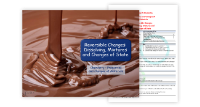
This lesson focuses on teaching pupils how to demonstrate that dissolving, mixing, and changes of state are reversible changes. They will learn how to compare and group everyday materials based on properties such as hardness, solubility, transparency, conductivity, and response to magnets. This lesson covers topics learned in previous years including states of matter, properties of everyday materials, and how to change the shape of solid objects.
The cross-curricular links include ICT, where pupils can research the contents of seawater, and Maths, where pupils can create graphs of their experimental results. Additionally, pupils can learn about the history of metalworking and the transition from Bronze to Iron Age. Some common misconceptions, such as pure orange juice being a pure substance and air being a single substance, will be corrected in this lesson.
Keywords
- Solute
- Solvent
- Solution
- Dissolving
- Soluble
- Insoluble
- Saturated
- Mixture
- Reversible
Influential Scientists
- Mary Maynard
- Daly
- Linus Pauling
- Rosalind Franklin
- Stephanie Kwolek
Important Lesson Guidance
Citric acid and bicarbonate of soda are needed for the activity and can be obtained from a local secondary school or online. Bicarbonate of soda can also be purchased from a local supermarket.
Activity: Making a Solution
In this activity, each pupil in the group will be given a clear plastic cup and a solid such as salt, sugar, sand, or soil. They will fill the cup with half water, add one teaspoon of the solid, and observe if the solid dissolves. The group will share their results and fill in the table to determine if the solid is soluble or insoluble.
Activity: Solubility of Solutes
In this activity, each pupil will have their own cup, solute (salt, bicarbonate of soda, granulated sugar, or citric acid), and a set of measuring cylinders. They will measure 30ml of water, add a flat teaspoon of the solute, and stir well. The pupils will observe the water to see if the solute has dissolved and repeat the process until the saturation point is reached. The pupils will record their results and rank the solubility of each solute.
The science behind this activity is explained by the solutes moving into the gaps between water particles when they dissolve. Once the spaces are filled, no more solute can dissolve and the saturation point is reached. The pupils will learn that the four solids being tested are solutes and the water is the solvent.
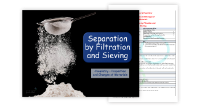
This lesson focuses on the concepts of solids, liquids, and gases and how they can be separated by filtration and sieving. The students will learn about forming solutions and recovering substances from them. The previous learning includes identifying everyday materials, changing shapes of solid objects, and states of matter, including evaporation and condensation. The cross-curricular links are with Maths and Geography and History. The influential scientists include Sir Francis Bacon, Hippocrates, and James Simpson. The lesson will include two activities: "Separating Mixtures by Sieving" and "Filter Paper Investigation."
Misconceptions and Corrections
- Misconception: Filtration is a modern invention. Correction: Humans had filtration systems thousands of years ago.
- Misconception: All mixtures are solutions. Correction: Solutions are formed when a solute is dissolved in a solvent, not all mixtures are produced through the process of dissolving.
Keywords
Solute, Solvent, Solution, Dissolving, Soluble, Insoluble, Filtration, Sieving, Separation.
Activity: Separating Mixtures by Sieving
Students will work in groups of 4 and use a colander and sieve to separate marbles, rice, and water. They will compare the similarities and differences of the two items in terms of material form, size of holes, etc. They will use the sieve to separate water from solids and the colander to separate rice from marbles. The separation will not be perfect and students will discuss ways to separate the items perfectly. The science behind the activity is explained, and possible questions are provided for the students to reflect on their learning.
Activity: Filter Paper Investigation
The students will work in groups of 4 and use filter paper, tea bags, coffee filters, and green food coloring to investigate filtration. They will measure 50ml of water with food coloring and use filter papers of different grades to filter the water. The time taken to filter the water will be recorded and compared. The students will also try using a tea bag and coffee filter. The activity provides hands-on experience with filtration and helps the students understand how filtration works and its applications.
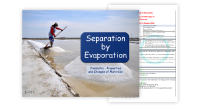
This lesson focuses on using knowledge of solids, liquids, and gases to separate mixtures through evaporation. Students will have previously learned about everyday materials and the states of matter in Year 1 and Year 4. The cross-curricular links to ICT and Maths are also noted, with pupils using research and calculations in their experiments. The lesson will address misconceptions related to evaporation, including that it turns the original liquid into a new substance, and that lots of heat is always required for evaporation to occur. Keywords, influential scientists, and important lesson guidance are also provided.
Activities
The lesson includes two activities: "Disappearing Water" and "Using Evaporation to Separate Solutes from Solvents." In the first activity, students will measure out 50mls of water into plastic cups, cover one cup with cling film, and observe the water loss over a week. In the second activity, students will use evaporation to separate salt from water. They will weigh a pie tin, add salt to it, measure 20mls of water and pour it into the tin, light a tealight and place it under the tin, and use a stopwatch to time how long it takes for the salt to fully dissolve.
Science Explained
The lesson explains that evaporation is a change of state from a liquid to a gas and that the heat or wind in the environment contributes to the rate of evaporation. Students will understand that water loss can be accounted for by evaporation and that the rate may be affected by factors such as airtightness and the environment.
Possible Questions
- Was there a difference between the cup with film and that without after 1 week?
- Where do you think the water went?
- Which location showed the greatest water loss? Why do you think this is?
- How long do you estimate it would take for the water to evaporate completely?
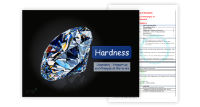
In this lesson, students will learn about hardness as a property of materials. The students will build on their previous learning about everyday materials from years 1-4. In year 1, students identified and named a variety of everyday materials, in year 2 they found out how shapes of solid objects can be changed, in year 3 they compared and grouped different rocks, and in year 4 they compared and grouped materials into solids, liquids, and gases. This lesson is not part of the Year 6 Chemistry curriculum. However, it is linked to cross-curricular subjects such as History, Design and Technology, and English.
The main activity in this lesson is to produce a report on the Mohs scale and classify items based on their hardness. Students will use the Mohs scale to identify minerals in the field and it goes from 1-10, with the higher number indicating a harder mineral. Talc is 1 on the scale and diamond is 10. In the materials classification activity, students will use their own scale to classify items based on their hardness and write descriptions of the properties of each material. Finally, in the activity on the hardness of materials, students will physically test the hardness of various materials using a glass slide, copper coin, paper clip, fingernail, and other materials. The properties of the materials studied will be linked to their use, such as rubber being stretchy (elastic), making it ideal for elastic bands.
Misconceptions and Keywords
The lesson will address common misconceptions such as all metals being solids at room temperature and all metals being hard. It will also introduce keywords such as hardness, Mohs Scale, mineral, flexible, elastic, stretchy, and brittle. Influential scientists such as Alexander Parkes, John Wesley Hyatt, Leo Baekeland, Eugen Bauman, Wallace Carothers, and Friedrich Mohs will also be mentioned in the lesson.
Important Lesson Guidance
There is flexibility in the materials that can be tested in this lesson and the results tables are just examples. It would be best if a wide range of materials is available for the students to test for hardness, including rocks. There is also much flexibility in terms of the size of the groups, with the recommended group size being 4 students. The students will use learning pads for the Mohs scale activity.

This lesson focuses on comparing and grouping everyday materials based on their properties of transparency and response to magnets. The objectives are to classify materials as transparent, translucent or opaque, and to classify materials based on whether they are attracted to magnets.
Previous Learning
The students have previously learned about everyday materials, the uses of everyday materials, rocks, forces and magnets, light, and states of matter. In Year 1, they have identified and named various everyday materials. In Year 2, they have found out how the shapes of solid objects can be changed by squashing, bending, twisting and stretching. In Year 3, they have compared and grouped rocks and everyday materials based on their appearance and physical properties and learned about light and shadows. In Year 4, they have compared and grouped materials based on whether they are solids, liquids, or gases.
Cross-Curricular Links
- History: Pupils could learn about ancient cultures navigating the seas using lodestone.
- DT: Pupils could learn about soda glass manufacturing.
- Art: Pupils could learn about the meaning of 'pentimento' and its impact on galleries.
Misconceptions and Corrections
- Transparent objects do not cast shadows - All objects, regardless of material, cast shadows to a greater or lesser degree.
- All metals are attracted to magnets - Only certain metals are attracted to magnets.
- All non-metals do not attract magnets - Liquid oxygen is attracted to magnets.
Important Lesson Guidance
The teacher is encouraged to provide a variety of materials for pupils to handle during the lesson.
Activity: Transparency Investigation
The students will work in groups of 4 and investigate the transparency of various materials using torches. They will hold the object up, note the material it is made of, and one student will stand on either side of the object. One student will hold the torch close to the object and turn it on, and the other student will observe if they can see all, some, or none of the light. They will repeat the process with various materials and use their results to classify the materials as transparent, translucent, or opaque. The goal is to obtain 20 results.
Science Explained
- Objects are either transparent, translucent, or opaque.
- Opaque objects reflect light.
- Different types of the same material can have varying transparency.
- Gases tend to be transparent.
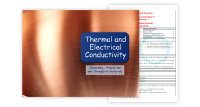
This lesson aims to help students compare and group everyday materials based on their electrical and thermal conductivity. The students will also be able to give reasons for the specific uses of materials like metals, wood, and plastic. By the end of the lesson, students should be able to define the terms conductor and insulator, state which types of materials make the best thermal and electrical conductors/insulators, and link the properties of materials to their use.
The lesson will cover a review of prior learning, including everyday materials, uses of materials, states of matter, and electricity. Cross-curricular links to history, design and technology, and mathematics will also be incorporated. The lesson aims to correct any misconceptions such as thinking all metals are good conductors of heat, and all non-metals are electrical insulators. Keywords for the lesson include conductor, insulator, thermal, heat, and deformed.
Influential scientists such as Benjamin Franklin, Prokop Divis, and Nikola Tesla will also be discussed. The lesson will include two main activities: Thermal Conductors and Insulators and Thermal Conduction. Equipment for the activities include wooden ruler, plastic ruler, aluminium foil, paper, cotton wool, ceramic mug, cardboard, stopwatch, plastic building blocks, plastic bag, ice, mug or hard plastic cup, metal teaspoon, plastic teaspoon, wooden teaspoon or small length of dowel, and warm water. The activities will involve touch tests, recording times for ice to melt, and ranking materials based on conduction.
The science behind the lesson will be explained, including heat moving from hot regions to cold regions, metals feeling the coldest to the touch, and why metals will melt ice first. Possible questions for the students include the differences between the touch of metals and non-metals, which will melt ice more quickly, and what type of materials make the best conductors.
Important Lesson Guidance
Teachers have the flexibility to choose a variety of materials for testing, but it is important to ensure a variety of materials for students to handle. The water used in the second activity should be safe enough for students to handle.
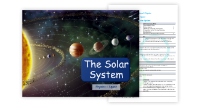
In this lesson, pupils will learn about the movement of the Earth and other planets relative to the Sun in the solar system. The students will classify planets as either rocky or gas giants and describe the orbits of the planets as elliptical.
Previous Learning
Pupils in EYFS and KS1 may not have prior knowledge of Space in the National Curriculum, but they may know the names of some of the planets and that an asteroid caused the extinction of the dinosaurs. In Yr. 3, students have learned about light and forces, and in Yr. 6, they learned about how light travels in straight lines to explain shadows.
Cross-Curricular Links
- RE: Pupils could find out about the creation myths of different cultures
- Maths: Pupils will draw a graph of distance v surface temperature of the planets
- Art: Pupils will make a model of planets and the solar system
- English: Pupils could come up with their own mnemonic to remember the order of the planets
Misconceptions and Corrections
- The Earth is not the center of the solar system, but the Sun is.
- The Sun does not move across the sky, it remains in the same place and it is the Earth's movement that makes the Sun appear to move.
- Planets orbit the Sun in an elliptical shape, not a circular one.
- Jupiter, Uranus, and Neptune also have ring systems, not just Saturn.
The lesson will cover influential scientists such as Galileo Galilei, Nicolas Copernicus, Johannes Kepler, and others. Pupils will also participate in activities like the Orbits of Planets and Planet Top Trumps. They will also complete a table to find the relationship between distance from the Sun and surface temperature of the planet.
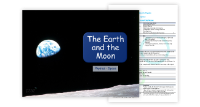
This lesson focuses on understanding the relationship between the Earth, Sun, and Moon, as well as the apparent movement of the Sun across the sky and the movement of the Moon relative to the Earth. The lesson begins with a review of the previous learning in early years foundation stage and Key Stage 1, as well as Key Stage 2 (KS2) curriculum links in year 3 light and year 3 forces, year 6 light. The lesson also has cross-curricular links to History, English, Maths, and Geography.
The misconceptions associated with the topic are also highlighted, such as the idea that the Sun is yellow, the Moon doesn’t spin, the shadow of the Earth causes phases of the Moon, and the Moon shines. Some influential scientists in this field are also mentioned, such as Aristarchos of Samos, Eratosthenes, Ptolemy, Carolyn Porco, Tycho Brahe, and Nancy Grace Norman.
Activities
Day and Night
In this activity, students use a torch and a globe to observe the change in light and shadow as the globe rotates. The objective is to understand why we have day and night on Earth and why this is cyclical.
The Sun’s Movement Across the Sky
In this activity, students use learning pads to compare the geocentric and heliocentric theories and explain the apparent movement of the Sun across the sky.
The Orbiting Moon Model
In this activity, students use the orbits card from a previous lesson, a large marble, a small marble, and a ruler to make a model of the Earth and Moon’s orbit.
Possible questions that students may encounter include: why is the Earth slightly on its side, what direction does the Earth spin, and why is sunrise at different times in different locations.
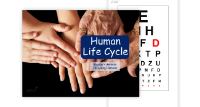
In this lesson, students will learn about the changes that occur in humans as they age. The lesson aims to answer two questions:
- Can I explain some of the changes that occur in humans from when they are born?
- Can I describe some of the characteristics that occur as humans get older?
Students should have prior knowledge of the human body and growth through their studies in early years and key stage 2. The lesson is aligned with the KS2 curriculum, specifically the topics of living things and their habitats and animals including humans. Cross-curricular links can be made with ICT, where students can research osteoporosis and other bone-weakening diseases, and RE, where students can research the ages of some of the patriarchs in the Bible.
The lesson will address common misconceptions about aging, such as the idea that brain power decreases with age and that men and women have the same average life span. Students will be provided with the correct information that brain power can increase with mental stimulation and that women live longer than men on average.
Activity: Making Human Life Stage Cards
In this activity, students will work in groups of 4 to research and discuss the life stages of humans. They will create information cards or a report that will show the stages and the characteristics of individuals at each stage, such as their physical descriptions, ability to walk or talk, etc. They will then compare their life stage cards to those provided.
Activity: A Closer Look at Puberty
In this activity, students will work in groups of 4 to discuss the changes that occur from childhood to adulthood in both sexes. They will use puberty cards to construct a Venn diagram and explore what happens to both sexes and what is unique to each sex during puberty.
Activity: How Bones Change with Age
In this activity, students will work in groups of 4 to explore how bones change with age. They will use a plastic bottle, measuring cylinder, card, 2 thick books, sharp pencil, and plasticine to conduct an experiment and record the results. The experiment involves gradually adding weight to a card representing a radius bone in the arm and observing when the card collapses. The results will be recorded for 4, 8, 16, and 32 holes punched into the card.
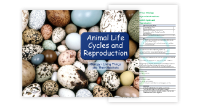
This lesson is designed to help pupils understand the life process of reproduction in some animals and to describe the differences in the life cycles of a mammal, an amphibian, an insect and a bird.
The lesson aims to correct misconceptions such as all animals being born, no mammals laying eggs, and offspring always being different from the parent. The keywords for this lesson include sexual reproduction, mating, hatch, birth, and offspring. Influential scientists such as Robert Hooke, Rachel Carson, Andreas Vesalius, Jane Goodall, Johann Naumann, and Emily Arnesen are also included in the lesson.
Activity: Worm Charming
The worm charming activity requires pupils to work in groups of 4 with equipment such as 2 sticks, a plastic container, water, a trowel, mustard powder, and a jug. The activity involves charming worms and collecting them, as well as observing their behavior in response to different stimuli such as vibrations, mustard solution, and plain water.
Science Explained
The science behind worm charming is that the vibrations created by tapping a thick stick pass through the soil, mimicking the movement of moles. This is a survival mechanism for worms as moles love to eat them. Worms play an important role in the health of soil by breaking down organic matter and leaving behind important plant and animal nutrients.
Possible Questions
- Why do worms move to the surface when it rains?
- How many worms were in your patch of ground?
- Do you think worms are useful or not? Why do you say this?
Activity: Worm Farm
The worm farm activity requires pupils to work in groups of 4 with equipment such as a 2l bottle, sand, soil, water, scales, ruler, scissors, straw, sticky tape, grated carrot, potato peelings, used teabags, parsnips, and newspaper. The activity involves creating a worm farm and observing the worms' behavior and growth over time.
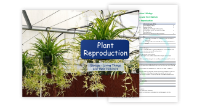
The purpose of this lesson is to describe the life process of reproduction in plants. Pupils will be expected to state that plants can reproduce either sexually or asexually, and describe some methods for asexual reproduction in plants. This lesson will build on previous learning from earlier grades, including the structure of plants, their life cycle, and the role of flowers in the pollination process.
This lesson aligns with the National Curriculum and the Yr. 6 Evolution and Inheritance and Living Things and their Habitats units. Cross-curricular links will be made to English (report writing), Maths (line graph drawing), and History (researching the voyage of the Beagle).
Some important safety considerations include being aware of allergies, washing hands after handling plants, and avoiding hazardous species when collecting plants. It is also important to note that offspring of organisms may not always be different from their parents, as asexual reproduction can result in identical offspring.
Keywords for the lesson include sexual and asexual reproduction, regeneration, cutting, and fragments. Influential scientists for this lesson include Gregor Mendel, Charles Darwin, Agnes Arbor, Mary Chase, and Theophrastus.
The lesson will include two activities: Plant Reproduction Research and Asexual Reproduction in Plants 1 (WS). The Plant Reproduction Research will involve producing a report explaining the differences between sexual and asexual reproduction in plants and including several types of asexual reproduction. The Asexual Reproduction in Plants 1 (WS) activity involves growing different plant specimens in soil and water to observe and compare growth over time.
Preparation and Resources
It is important to prepare ahead of time by planting vegetables and cuttings 6 weeks before the lesson. On a weekly basis, pupils will collect their results which will be discussed in class. Pupils should have the results table written in their books and there should be designated plant waterers to ensure the plants remain healthy.
Equipment for the activities includes learning pads for the Plant Reproduction Research and plastic cups, tomatoes, potatoes, onion, spring onion, carrots with leaves, ginger roots, soil, water, cocktail sticks, labels, and a ruler for the Asexual Reproduction in Plants 1 (WS) activity.
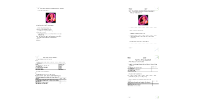
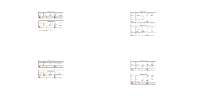
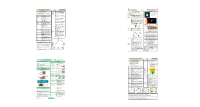
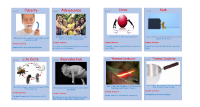
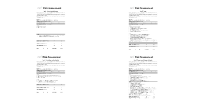
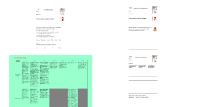
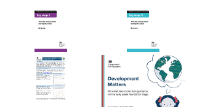

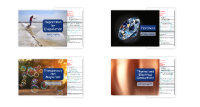
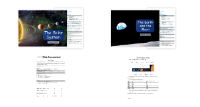
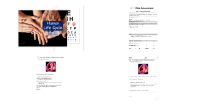
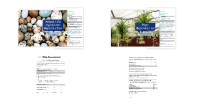






The lesson aims to explain how unsupported objects fall towards the Earth due to the force of gravity. The students will be asked questions such as:
- Can I describe gravity as a pull, or attractive force?
- Can I explain that gravity pulls objects towards the centre of the Earth, and if they are in the air, it would make objects fall?
- Can I calculate weight?
The lesson also includes cross-curricular links to history, ICT, and math. In history, students will have the opportunity to find out why the leaning tower of Pisa was important in the study of gravity. In ICT, students will research the gravitational constants of various celestial bodies, and in math, students will perform unit conversions and calculations, and produce graphs of their experimental results.
Misconceptions that will be addressed in this lesson:
- Heavier objects fall more quickly
- Objects are attracted to the ground
- There is no gravity in space
- Gravity is the same everywhere in the universe
Keywords:
- Gravity
- Descend
- Newton
- Air-Resistance
- Mass
- Weight
Influential scientists that will be mentioned in the lesson include:
- Aristotle
- Galileo Galilei
- Isaac Newton
- Albert Einstein


In this lesson, students will learn about the effects of friction on moving surfaces. The objective of this lesson is for students to be able to identify that friction occurs when two surfaces slide against each other, understand that friction slows objects down, and describe the relationship between the amount of friction and the rate of deceleration. This lesson aligns with the Year 3 science curriculum on Forces and Magnets and has cross-curricular links to Design and Technology and Mathematics.
Students will be introduced to the science behind friction through a teacher demonstration of the "Handkerchief and the Cup" activity. They will then participate in the "Does Mass Affect Friction?" activity where they will test the amount of friction on different surfaces with varying amounts of mass. The results of this experiment can be graphed for mathematical analysis.
Misconceptions and Corrections
It is important to note that students may have misconceptions about friction. Some students may think that lubricants eliminate friction, when in reality, they only reduce friction. Additionally, students may believe that friction is not useful when in fact, it is essential in slowing down machines. Finally, students may believe that smooth surfaces have no friction when all materials show friction to a certain extent.
Keywords
- Friction
- Decelerate
- Smooth
- Rough
- Surface
Influential Scientists
This lesson highlights the work of several influential scientists in the field of friction including Leonardo da Vinci, Guillaume Amontons, Charles Augustin de Coulomb, Charles Hatcbett, Theodor Reye, and David Tabor.
Important Lesson Guidance
It is important to note that before the lesson, you will need to collect 32 plastic bottle caps and punch holes in the center of each cap. The "Does Mass Affect Friction?" activity requires materials such as Tupperware tubs, masses, string, force meters, a 100ml measuring cylinder, and aluminium foil. The experiment is performed in groups of four and the results can be recorded in a table for analysis. It is important to keep the balloon cars for Lesson 5.3.

In this lesson, students will learn about the effects of air resistance. The objectives are to explain air resistance as a type of friction, describe the effects of air resistance, and suggest ways of increasing or decreasing air resistance. This lesson aligns with the Year 5 curriculum of identifying the effects of air resistance, water resistance, and friction in forces.
Previous Learning
Students in the Early Years Foundation Stage (EYFS) and Key Stage 1 (KS1) are not required to learn about forces, although they may have learned that parachutes slow down the speed of falling. In Key Stage 2 (KS2), Year 3 students learn about forces and magnets and how things move on different surfaces, and Year 5 students learn about forces in more detail.
Cross-Curricular Links
- Design and Technology: Students will make helicopters and rockets.
- Art: Students can color and decorate their rockets.
- Mathematics: Students can create graphs of their experimental results.
- History: Students can write a report on the use of paratroopers in World War 2.
Misconceptions and Corrections
- Misconception: Air resistance is not friction. Correction: Air resistance is a type of friction where the particles of an object strike air particles as it moves through air.
- Misconception: There is air resistance in space. Correction: No air particles exist in space, so there is no air resistance.
- Misconception: Fins on rockets reduce air resistance. Correction: By themselves, fins do not reduce air resistance, but they stabilize the rocket, and an unstable rocket will exhibit greater air resistance.
Important Lesson Guidance
Teachers should ensure that students have the necessary equipment for the lesson, including balloons from a previous lesson and hairdryers from home. The eggs used in the activity should not be cooked.
Activity: Save the Egg!
In this activity, the whole class will participate in a teacher demonstration. Students will observe the differences in descent speed between three different sized parachutes made from bin bags and string, with an egg in a resealable bag as the payload. The larger the surface area of the parachute, the slower the descent and the greater the air resistance.
Science Explained
Air resistance is a frictional force that slows objects as they move through the air. It acts in the opposite direction to the opposing force, in this case, gravity. The surface area of the object moving through the air affects the amount of air resistance it experiences. In the Save the Egg activity, students will see that the large parachute descends slower and helps keep the egg intact upon landing.
Possible Questions
- Why does the large parachute descend more slowly?
- What type of force is air resistance?
- Is air resistance useful

This lesson focuses on the concept of water resistance, its effects on moving objects, and ways to reduce it. Students will learn about the forces that act between moving surfaces and how they affect the movement of objects. The students will be introduced to the influential scientists who have studied water resistance and friction, and will be taught about the differences between water resistance and friction.
The lesson is divided into three activities: making and testing boats, watercraft shape research, and the quickest submarine. In the first activity, students will create different boat shapes and measure the water resistance using a force meter. In the second activity, students will research the shapes of different watercraft and compare them with ancient and modern watercraft. In the third activity, students will create submarines and compare their speeds.
Keywords
- Friction
- Water Resistance
- Surface Area
- Decelerate
- Water Particles
- Drag
- Float
- Sink
Misconceptions
- Water Resistance is not friction
- There is no water resistance for floating objects
It is important to note that water resistance is a type of friction, where the particles of an object strike water particles as it moves through air. Also, objects in contact with water still experience water resistance.
Important Lesson Guidance
In this lesson, students will be conducting experiments with water troughs, so it is important to have plenty of paper towels ready. The cleanup procedure for the water trough experiments is described in the lesson plan, but if students forget to place their troughs on the corner of the table, they will need to use a jug as a scoop instead.

In this lesson, students will learn about the basic concepts of levers, pulleys, and gears, and how they are used to make mechanical work easier. They will learn that by using these mechanisms, a smaller force can have a greater effect. The lesson will cover four main objectives:
- State that machines can make mechanical work easier.
- Explain that the longer the lever, the less effort needed to lift a load.
- Explain that adding pulleys reduces the effort required to lift a load.
- Describe the effect of a larger cog on a smaller cog.
This lesson is suitable for students in year 3 who have already been introduced to forces and magnets. The lesson plan also has cross-curricular links with design and technology, mathematics, and history. Students will make a simple lever and graph their experimental results, and learn about the history of pulleys and their usage in ancient civilizations. The lesson plan includes activities that will help students understand the concepts of effort, load, energy, fulcrum, pivot, mechanical, pulley, gears, cog, and rotation.
Influential scientists such as Archimedes, Hero of Alexandria, Franz Reuleux, and Simon Stevin will be introduced in the lesson. The teacher will need to purchase a gear set as it is not possible to make them in class. The class will participate in a demonstration to show the effort required to lift a load can be reduced by using pulleys. The lesson will also include an activity where students will learn how the classroom door functions as a lever and how the position of the fulcrum affects the effort required to move a load.
In conclusion, this lesson is a comprehensive introduction to the basics of levers, pulleys, and gears and how they can be used to make mechanical work easier. Students will learn how simple machines work and be able to apply their understanding to real-world scenarios.

This lesson teaches pupils about the fire triangle and the importance of understanding the three elements that are needed to produce fire: heat, fuel, and oxygen. They will be introduced to the concept of combustion and how it leads to the formation of new materials. The pupils will then participate in a series of hands-on activities to reinforce their understanding of the fire triangle, including a report on the history of combustion and graphs of their experimental results.
Previous Learning
Prior to this lesson, pupils should have an understanding of the states of matter and have identified and named various everyday materials. In Year 4, they learned about the states of matter and observed how some materials change state when heated or cooled.
Keywords
- Fire
- Burning
- Combustion
- Oxygen
- Carbon dioxide
- Fuel
- Mass
Influential Scientists
- Antoine Lavoisier
- Marianne Lavoisier
- Henry Cavendish
- Joseph Priestley
- Carl Scheele
Activities
The Fire Triangle
Pupils will work in groups of two to produce a report on the three elements of the fire triangle. They will also draw the triangle as part of their report.
Fire Needs Oxygen (WS)
Pupils will work in groups of four to investigate the relationship between the size of a glass and the time a tealight can remain lit. They will record the results of their experiment in a table and observe the impact of the availability of oxygen on the combustion process.
What Happens to the Mass of the Candle When Lit? (WS)
Pupils will work in groups of four to measure the mass of a tealight before and after it has been lit. They will observe the impact of combustion on the mass of the candle and record their results in a table.
Science Explained
The lesson explains the process of combustion, including the role of fuel, heat, and oxygen. The pupils will learn that the wax in a candle is the fuel, and the matches provide the heat. The available oxygen in the air is used up during combustion, leading to the formation of carbon dioxide, which then extinguishes the flame. The lesson highlights that the process of combustion is irreversible and that the carbon dioxide produced does not return to its original form as wax.
Important Lesson Guidance
Safety is the top priority in this lesson. It is important that the teacher adheres to the guidance provided and that enough materials are available for the activities, including tealight candles and narrow-gauge iron wool.

The main focus of this lesson is to explain that some changes result in the formation of new materials, which is not usually reversible. Students will learn about chemical reactions and the signs that indicate a reaction has occurred, such as the formation of gas, heat, or light. They will also learn to identify the products of chemical reactions. The class will also classify substances as acids, alkalis, or neutral based on their pH level, which is a measure of the ability of a substance to produce hydrogen in solution. The pH scale ranges from 1-14, with values below 7 being acidic, values above 7 being alkaline, and 7 being neutral.
This lesson is aligned with the previous learning in Year 1 to identify and name everyday materials and in Year 2 to find out how solid objects' shapes can be changed. The activity will involve using pH paper and a variety of substances such as cola, lemon juice, bicarbonate of soda, vinegar, and more to classify the substances as acid, alkali, or neutral. Students will work in groups of four and follow the steps of tearing off some of the pH paper and dipping it into the sample, observing the color change, and making a judgement of the pH level.
In the second activity, students will learn about neutralizing acids. They will measure out different amounts of vinegar and bicarbonate of soda, stir the mixture, and test the pH level until the paper turns green. They will repeat the process with different ratios of vinegar and bicarbonate of soda to understand the effect of adding more or less of either substance on the pH level.
Cross-Curricular Links
- DT: Research the role of acids in etching
- Maths: Produce graphs of experimental results
- History: Write an essay on the role of acids in the first battery made
Important Lesson Guidance
Before the lesson, the teacher will need to obtain some cola, bicarbonate of soda, and lemon juice. For the pH classification activity, the teacher has free reign on the substances tested, as long as they are safe for students to handle. The solid samples will need to be mixed with a small amount of water for testing. In the neutralizing acids activity, the equipment required includes clear plastic cups, vinegar, bicarbonate of soda, pH paper, teaspoons, and a measuring cylinder. The students will work in groups of two.
Influential Scientists
Soren Sorensen, Jons Berzelius, Humphrey Davey.
Keywords
Irreversible, Acid, Alkali, pH scale, Neutral, Carbon Dioxide, Neutralization.

This lesson focuses on teaching pupils how to demonstrate that dissolving, mixing, and changes of state are reversible changes. They will learn how to compare and group everyday materials based on properties such as hardness, solubility, transparency, conductivity, and response to magnets. This lesson covers topics learned in previous years including states of matter, properties of everyday materials, and how to change the shape of solid objects.
The cross-curricular links include ICT, where pupils can research the contents of seawater, and Maths, where pupils can create graphs of their experimental results. Additionally, pupils can learn about the history of metalworking and the transition from Bronze to Iron Age. Some common misconceptions, such as pure orange juice being a pure substance and air being a single substance, will be corrected in this lesson.
Keywords
- Solute
- Solvent
- Solution
- Dissolving
- Soluble
- Insoluble
- Saturated
- Mixture
- Reversible
Influential Scientists
- Mary Maynard
- Daly
- Linus Pauling
- Rosalind Franklin
- Stephanie Kwolek
Important Lesson Guidance
Citric acid and bicarbonate of soda are needed for the activity and can be obtained from a local secondary school or online. Bicarbonate of soda can also be purchased from a local supermarket.
Activity: Making a Solution
In this activity, each pupil in the group will be given a clear plastic cup and a solid such as salt, sugar, sand, or soil. They will fill the cup with half water, add one teaspoon of the solid, and observe if the solid dissolves. The group will share their results and fill in the table to determine if the solid is soluble or insoluble.
Activity: Solubility of Solutes
In this activity, each pupil will have their own cup, solute (salt, bicarbonate of soda, granulated sugar, or citric acid), and a set of measuring cylinders. They will measure 30ml of water, add a flat teaspoon of the solute, and stir well. The pupils will observe the water to see if the solute has dissolved and repeat the process until the saturation point is reached. The pupils will record their results and rank the solubility of each solute.
The science behind this activity is explained by the solutes moving into the gaps between water particles when they dissolve. Once the spaces are filled, no more solute can dissolve and the saturation point is reached. The pupils will learn that the four solids being tested are solutes and the water is the solvent.

This lesson focuses on the concepts of solids, liquids, and gases and how they can be separated by filtration and sieving. The students will learn about forming solutions and recovering substances from them. The previous learning includes identifying everyday materials, changing shapes of solid objects, and states of matter, including evaporation and condensation. The cross-curricular links are with Maths and Geography and History. The influential scientists include Sir Francis Bacon, Hippocrates, and James Simpson. The lesson will include two activities: "Separating Mixtures by Sieving" and "Filter Paper Investigation."
Misconceptions and Corrections
- Misconception: Filtration is a modern invention. Correction: Humans had filtration systems thousands of years ago.
- Misconception: All mixtures are solutions. Correction: Solutions are formed when a solute is dissolved in a solvent, not all mixtures are produced through the process of dissolving.
Keywords
Solute, Solvent, Solution, Dissolving, Soluble, Insoluble, Filtration, Sieving, Separation.
Activity: Separating Mixtures by Sieving
Students will work in groups of 4 and use a colander and sieve to separate marbles, rice, and water. They will compare the similarities and differences of the two items in terms of material form, size of holes, etc. They will use the sieve to separate water from solids and the colander to separate rice from marbles. The separation will not be perfect and students will discuss ways to separate the items perfectly. The science behind the activity is explained, and possible questions are provided for the students to reflect on their learning.
Activity: Filter Paper Investigation
The students will work in groups of 4 and use filter paper, tea bags, coffee filters, and green food coloring to investigate filtration. They will measure 50ml of water with food coloring and use filter papers of different grades to filter the water. The time taken to filter the water will be recorded and compared. The students will also try using a tea bag and coffee filter. The activity provides hands-on experience with filtration and helps the students understand how filtration works and its applications.

This lesson focuses on using knowledge of solids, liquids, and gases to separate mixtures through evaporation. Students will have previously learned about everyday materials and the states of matter in Year 1 and Year 4. The cross-curricular links to ICT and Maths are also noted, with pupils using research and calculations in their experiments. The lesson will address misconceptions related to evaporation, including that it turns the original liquid into a new substance, and that lots of heat is always required for evaporation to occur. Keywords, influential scientists, and important lesson guidance are also provided.
Activities
The lesson includes two activities: "Disappearing Water" and "Using Evaporation to Separate Solutes from Solvents." In the first activity, students will measure out 50mls of water into plastic cups, cover one cup with cling film, and observe the water loss over a week. In the second activity, students will use evaporation to separate salt from water. They will weigh a pie tin, add salt to it, measure 20mls of water and pour it into the tin, light a tealight and place it under the tin, and use a stopwatch to time how long it takes for the salt to fully dissolve.
Science Explained
The lesson explains that evaporation is a change of state from a liquid to a gas and that the heat or wind in the environment contributes to the rate of evaporation. Students will understand that water loss can be accounted for by evaporation and that the rate may be affected by factors such as airtightness and the environment.
Possible Questions
- Was there a difference between the cup with film and that without after 1 week?
- Where do you think the water went?
- Which location showed the greatest water loss? Why do you think this is?
- How long do you estimate it would take for the water to evaporate completely?

In this lesson, students will learn about hardness as a property of materials. The students will build on their previous learning about everyday materials from years 1-4. In year 1, students identified and named a variety of everyday materials, in year 2 they found out how shapes of solid objects can be changed, in year 3 they compared and grouped different rocks, and in year 4 they compared and grouped materials into solids, liquids, and gases. This lesson is not part of the Year 6 Chemistry curriculum. However, it is linked to cross-curricular subjects such as History, Design and Technology, and English.
The main activity in this lesson is to produce a report on the Mohs scale and classify items based on their hardness. Students will use the Mohs scale to identify minerals in the field and it goes from 1-10, with the higher number indicating a harder mineral. Talc is 1 on the scale and diamond is 10. In the materials classification activity, students will use their own scale to classify items based on their hardness and write descriptions of the properties of each material. Finally, in the activity on the hardness of materials, students will physically test the hardness of various materials using a glass slide, copper coin, paper clip, fingernail, and other materials. The properties of the materials studied will be linked to their use, such as rubber being stretchy (elastic), making it ideal for elastic bands.
Misconceptions and Keywords
The lesson will address common misconceptions such as all metals being solids at room temperature and all metals being hard. It will also introduce keywords such as hardness, Mohs Scale, mineral, flexible, elastic, stretchy, and brittle. Influential scientists such as Alexander Parkes, John Wesley Hyatt, Leo Baekeland, Eugen Bauman, Wallace Carothers, and Friedrich Mohs will also be mentioned in the lesson.
Important Lesson Guidance
There is flexibility in the materials that can be tested in this lesson and the results tables are just examples. It would be best if a wide range of materials is available for the students to test for hardness, including rocks. There is also much flexibility in terms of the size of the groups, with the recommended group size being 4 students. The students will use learning pads for the Mohs scale activity.

This lesson focuses on comparing and grouping everyday materials based on their properties of transparency and response to magnets. The objectives are to classify materials as transparent, translucent or opaque, and to classify materials based on whether they are attracted to magnets.
Previous Learning
The students have previously learned about everyday materials, the uses of everyday materials, rocks, forces and magnets, light, and states of matter. In Year 1, they have identified and named various everyday materials. In Year 2, they have found out how the shapes of solid objects can be changed by squashing, bending, twisting and stretching. In Year 3, they have compared and grouped rocks and everyday materials based on their appearance and physical properties and learned about light and shadows. In Year 4, they have compared and grouped materials based on whether they are solids, liquids, or gases.
Cross-Curricular Links
- History: Pupils could learn about ancient cultures navigating the seas using lodestone.
- DT: Pupils could learn about soda glass manufacturing.
- Art: Pupils could learn about the meaning of 'pentimento' and its impact on galleries.
Misconceptions and Corrections
- Transparent objects do not cast shadows - All objects, regardless of material, cast shadows to a greater or lesser degree.
- All metals are attracted to magnets - Only certain metals are attracted to magnets.
- All non-metals do not attract magnets - Liquid oxygen is attracted to magnets.
Important Lesson Guidance
The teacher is encouraged to provide a variety of materials for pupils to handle during the lesson.
Activity: Transparency Investigation
The students will work in groups of 4 and investigate the transparency of various materials using torches. They will hold the object up, note the material it is made of, and one student will stand on either side of the object. One student will hold the torch close to the object and turn it on, and the other student will observe if they can see all, some, or none of the light. They will repeat the process with various materials and use their results to classify the materials as transparent, translucent, or opaque. The goal is to obtain 20 results.
Science Explained
- Objects are either transparent, translucent, or opaque.
- Opaque objects reflect light.
- Different types of the same material can have varying transparency.
- Gases tend to be transparent.

This lesson aims to help students compare and group everyday materials based on their electrical and thermal conductivity. The students will also be able to give reasons for the specific uses of materials like metals, wood, and plastic. By the end of the lesson, students should be able to define the terms conductor and insulator, state which types of materials make the best thermal and electrical conductors/insulators, and link the properties of materials to their use.
The lesson will cover a review of prior learning, including everyday materials, uses of materials, states of matter, and electricity. Cross-curricular links to history, design and technology, and mathematics will also be incorporated. The lesson aims to correct any misconceptions such as thinking all metals are good conductors of heat, and all non-metals are electrical insulators. Keywords for the lesson include conductor, insulator, thermal, heat, and deformed.
Influential scientists such as Benjamin Franklin, Prokop Divis, and Nikola Tesla will also be discussed. The lesson will include two main activities: Thermal Conductors and Insulators and Thermal Conduction. Equipment for the activities include wooden ruler, plastic ruler, aluminium foil, paper, cotton wool, ceramic mug, cardboard, stopwatch, plastic building blocks, plastic bag, ice, mug or hard plastic cup, metal teaspoon, plastic teaspoon, wooden teaspoon or small length of dowel, and warm water. The activities will involve touch tests, recording times for ice to melt, and ranking materials based on conduction.
The science behind the lesson will be explained, including heat moving from hot regions to cold regions, metals feeling the coldest to the touch, and why metals will melt ice first. Possible questions for the students include the differences between the touch of metals and non-metals, which will melt ice more quickly, and what type of materials make the best conductors.
Important Lesson Guidance
Teachers have the flexibility to choose a variety of materials for testing, but it is important to ensure a variety of materials for students to handle. The water used in the second activity should be safe enough for students to handle.

In this lesson, pupils will learn about the movement of the Earth and other planets relative to the Sun in the solar system. The students will classify planets as either rocky or gas giants and describe the orbits of the planets as elliptical.
Previous Learning
Pupils in EYFS and KS1 may not have prior knowledge of Space in the National Curriculum, but they may know the names of some of the planets and that an asteroid caused the extinction of the dinosaurs. In Yr. 3, students have learned about light and forces, and in Yr. 6, they learned about how light travels in straight lines to explain shadows.
Cross-Curricular Links
- RE: Pupils could find out about the creation myths of different cultures
- Maths: Pupils will draw a graph of distance v surface temperature of the planets
- Art: Pupils will make a model of planets and the solar system
- English: Pupils could come up with their own mnemonic to remember the order of the planets
Misconceptions and Corrections
- The Earth is not the center of the solar system, but the Sun is.
- The Sun does not move across the sky, it remains in the same place and it is the Earth's movement that makes the Sun appear to move.
- Planets orbit the Sun in an elliptical shape, not a circular one.
- Jupiter, Uranus, and Neptune also have ring systems, not just Saturn.
The lesson will cover influential scientists such as Galileo Galilei, Nicolas Copernicus, Johannes Kepler, and others. Pupils will also participate in activities like the Orbits of Planets and Planet Top Trumps. They will also complete a table to find the relationship between distance from the Sun and surface temperature of the planet.

This lesson focuses on understanding the relationship between the Earth, Sun, and Moon, as well as the apparent movement of the Sun across the sky and the movement of the Moon relative to the Earth. The lesson begins with a review of the previous learning in early years foundation stage and Key Stage 1, as well as Key Stage 2 (KS2) curriculum links in year 3 light and year 3 forces, year 6 light. The lesson also has cross-curricular links to History, English, Maths, and Geography.
The misconceptions associated with the topic are also highlighted, such as the idea that the Sun is yellow, the Moon doesn’t spin, the shadow of the Earth causes phases of the Moon, and the Moon shines. Some influential scientists in this field are also mentioned, such as Aristarchos of Samos, Eratosthenes, Ptolemy, Carolyn Porco, Tycho Brahe, and Nancy Grace Norman.
Activities
Day and Night
In this activity, students use a torch and a globe to observe the change in light and shadow as the globe rotates. The objective is to understand why we have day and night on Earth and why this is cyclical.
The Sun’s Movement Across the Sky
In this activity, students use learning pads to compare the geocentric and heliocentric theories and explain the apparent movement of the Sun across the sky.
The Orbiting Moon Model
In this activity, students use the orbits card from a previous lesson, a large marble, a small marble, and a ruler to make a model of the Earth and Moon’s orbit.
Possible questions that students may encounter include: why is the Earth slightly on its side, what direction does the Earth spin, and why is sunrise at different times in different locations.

In this lesson, students will learn about the changes that occur in humans as they age. The lesson aims to answer two questions:
- Can I explain some of the changes that occur in humans from when they are born?
- Can I describe some of the characteristics that occur as humans get older?
Students should have prior knowledge of the human body and growth through their studies in early years and key stage 2. The lesson is aligned with the KS2 curriculum, specifically the topics of living things and their habitats and animals including humans. Cross-curricular links can be made with ICT, where students can research osteoporosis and other bone-weakening diseases, and RE, where students can research the ages of some of the patriarchs in the Bible.
The lesson will address common misconceptions about aging, such as the idea that brain power decreases with age and that men and women have the same average life span. Students will be provided with the correct information that brain power can increase with mental stimulation and that women live longer than men on average.
Activity: Making Human Life Stage Cards
In this activity, students will work in groups of 4 to research and discuss the life stages of humans. They will create information cards or a report that will show the stages and the characteristics of individuals at each stage, such as their physical descriptions, ability to walk or talk, etc. They will then compare their life stage cards to those provided.
Activity: A Closer Look at Puberty
In this activity, students will work in groups of 4 to discuss the changes that occur from childhood to adulthood in both sexes. They will use puberty cards to construct a Venn diagram and explore what happens to both sexes and what is unique to each sex during puberty.
Activity: How Bones Change with Age
In this activity, students will work in groups of 4 to explore how bones change with age. They will use a plastic bottle, measuring cylinder, card, 2 thick books, sharp pencil, and plasticine to conduct an experiment and record the results. The experiment involves gradually adding weight to a card representing a radius bone in the arm and observing when the card collapses. The results will be recorded for 4, 8, 16, and 32 holes punched into the card.

This lesson is designed to help pupils understand the life process of reproduction in some animals and to describe the differences in the life cycles of a mammal, an amphibian, an insect and a bird.
The lesson aims to correct misconceptions such as all animals being born, no mammals laying eggs, and offspring always being different from the parent. The keywords for this lesson include sexual reproduction, mating, hatch, birth, and offspring. Influential scientists such as Robert Hooke, Rachel Carson, Andreas Vesalius, Jane Goodall, Johann Naumann, and Emily Arnesen are also included in the lesson.
Activity: Worm Charming
The worm charming activity requires pupils to work in groups of 4 with equipment such as 2 sticks, a plastic container, water, a trowel, mustard powder, and a jug. The activity involves charming worms and collecting them, as well as observing their behavior in response to different stimuli such as vibrations, mustard solution, and plain water.
Science Explained
The science behind worm charming is that the vibrations created by tapping a thick stick pass through the soil, mimicking the movement of moles. This is a survival mechanism for worms as moles love to eat them. Worms play an important role in the health of soil by breaking down organic matter and leaving behind important plant and animal nutrients.
Possible Questions
- Why do worms move to the surface when it rains?
- How many worms were in your patch of ground?
- Do you think worms are useful or not? Why do you say this?
Activity: Worm Farm
The worm farm activity requires pupils to work in groups of 4 with equipment such as a 2l bottle, sand, soil, water, scales, ruler, scissors, straw, sticky tape, grated carrot, potato peelings, used teabags, parsnips, and newspaper. The activity involves creating a worm farm and observing the worms' behavior and growth over time.

The purpose of this lesson is to describe the life process of reproduction in plants. Pupils will be expected to state that plants can reproduce either sexually or asexually, and describe some methods for asexual reproduction in plants. This lesson will build on previous learning from earlier grades, including the structure of plants, their life cycle, and the role of flowers in the pollination process.
This lesson aligns with the National Curriculum and the Yr. 6 Evolution and Inheritance and Living Things and their Habitats units. Cross-curricular links will be made to English (report writing), Maths (line graph drawing), and History (researching the voyage of the Beagle).
Some important safety considerations include being aware of allergies, washing hands after handling plants, and avoiding hazardous species when collecting plants. It is also important to note that offspring of organisms may not always be different from their parents, as asexual reproduction can result in identical offspring.
Keywords for the lesson include sexual and asexual reproduction, regeneration, cutting, and fragments. Influential scientists for this lesson include Gregor Mendel, Charles Darwin, Agnes Arbor, Mary Chase, and Theophrastus.
The lesson will include two activities: Plant Reproduction Research and Asexual Reproduction in Plants 1 (WS). The Plant Reproduction Research will involve producing a report explaining the differences between sexual and asexual reproduction in plants and including several types of asexual reproduction. The Asexual Reproduction in Plants 1 (WS) activity involves growing different plant specimens in soil and water to observe and compare growth over time.
Preparation and Resources
It is important to prepare ahead of time by planting vegetables and cuttings 6 weeks before the lesson. On a weekly basis, pupils will collect their results which will be discussed in class. Pupils should have the results table written in their books and there should be designated plant waterers to ensure the plants remain healthy.
Equipment for the activities includes learning pads for the Plant Reproduction Research and plastic cups, tomatoes, potatoes, onion, spring onion, carrots with leaves, ginger roots, soil, water, cocktail sticks, labels, and a ruler for the Asexual Reproduction in Plants 1 (WS) activity.











